
Neue Schwarzensteinhütte
Location 3026 m a.s.l., Ahrntal, near Bruneck, South Tyrol, Italy Architect Stifter + Bachmann Completion 2017 Cost approx. €3 million
The howling wind over the scree and glacier fields between Tribachkopf and Schwarzenstein brings dense fog and snow, creating treacherous weather conditions on an estimated 40 out of 90 days. This inhospitable and challenging terrain makes this location difficult to reach, accessible only by climbing or helicopter. It's simply astonishing that great architecture, such as Stifter + Bachmann's New Schwarzenstein Hut, can exist here. Oxidizing due to the relentless conditions around it, the once gleaming golden copper facade of the Alpine hut has turned almost black. The challenge of reaching the mountain ridge where the New Schwarzenstein Hut stands, and the opportunity to demonstrate the environmental impact on this three-year-old example of perfect alpine architecture, prompted me to pack only my essential equipment to make the extreme ascent to this refuge and add this magnificent landmark to my Modern Alpine Architecture collection.
Challenging architecture that appears at home on the summit
The New Schwarzenstein Hut is a mountain refuge designed for a planning competition held by the Autonomous Province of Bolzano. The architect, Helmut Stifter, informed me that while the energy concept, usage, and site allocation were subject to restrictions for the design, the architects were granted the freedom to choose the materials, construction, functional processes, and [and] general design conditions, provided the structure was innovative. The greatest challenge for Helmut Stifter was the unpredictable weather of the Zillertal Alps at a construction site 3,000 m above sea level. Strong winds, fog, snow, and impassable terrain subjected the progress of construction to the mercy of nature. With their own team of experts, Stifter + Bachmann built a material ropeway to transport the construction materials from a forest road up the mountain, as the problematic and constantly changing weather made transporting the materials by helicopter impossible.
When they completed the construction of the New Schwarzenstein Hut in 2017, their approximately 3 million euro creation sat in the receding glacier fields between Tribachkopf and Schwarzenstein, like an alien sculpture that had fallen from space. The refuge for climbers, located at 3,000 m a.s.l., had a polarizing effect, as the mountain hut was revered by some as a beautiful work of art, but also disapproved of by many nature lovers because of its ostentatious exterior. Over time, the copper facade began to oxidize, and today it appears almost black – like a rough diamond between the peaks of South Tyrol. Since most buildings are photographed immediately after construction, I was very interested in visiting and documenting the hut years after its completion to show its current appearance, and as proof of Stifter + Bachmann's sophisticated design. For me, it was essential to show how perfectly this monolith blends into the landscape, and to convey the incredible feeling of having a warm local meal in front of you while resting in the hut and enjoying the vast view of the Ahrntal, protected from the mighty forces of nature that surround you. The incredible view of Ahrntal that this refuge offers.
"The user levels of the building are vertically layered on top of each other, forming a narrow 'summit' that impressively shows mountaineers the way in all directions," explains Helmut Stifter. "The narrow structure leaves the building site largely free and untouched, and in its elementary gesture offers a simple answer to the complex construction task. The landscape determines the scenario on all sides – inside and out – allowing visitors to feel their exposure to the power of nature in this special place at all times."
Photographer & Pack Mule
My love for alpine architectural photography goes hand in hand with my love for climbing – and that's a good thing, because to reach the shooting location, my assistant Marcus and I had to overcome an altitude difference of 1,460 m within 6 km from the parking lot in the valley to the mountain hut. We began the ascent with a 20 kg backpack each, containing only the bare essentials. I am reminded of the saying: the profession of photographer is divided into 50% creativity and 50% pack mule.
The gravel road became steeper with every step and soon turned into a narrow hiking trail that wound in short serpentines between cow pastures and the last small bushes. After three kilometers, we reached the glacial moraine. From here, we saw the Schwazenstein Hut for the first time as a small dot on the ridge of the mountain massif. This is where the real fun began for us climbers! We crossed a mixture of scree, snow, and ice fields. The afternoon sun had melted the snow. Again and again, our feet sank 40 cm deep into the snow. We looked for a path over solid ground as best we could. With less luggage, we would have liked to have taken the old via ferrata through a lateral chimney. However, the challenging climb is only possible with even lighter equipment. So we climbed up the mountain via the somewhat easier via ferrata. At the end of the via ferrata, visibly exhausted, we reached the foot of the new Schwarzenstein Hut. The sun had already disappeared behind the mountain, so we could warm ourselves with a freshly cooked soup without a guilty conscience and then immediately fell into bed.
New Schwarzenstein Hut under the Alpine stars
The shooting day began early. At 04:30, a strong storm with winds of 80 km/h whipped around my face. Wrapped in a down jacket, thermal pants, gloves, and a thick hat, Marcus and I set off for a special night shot. Without my headlamp, it would have been completely dark. The moonless sky offered the perfect conditions to capture a beautiful starry sky. At the same time, however, the lack of ambient light made it difficult for me to get over the large boulders with my camera and tripod without being blown over by the wind. After three attempts, I found the right composition under the hut. Marcus used small LED lights to illuminate the communal level of the hut and create a little more context. The hut appears as a bright beacon reaching from Tyrol to the stars. The alien feeling that this night shot exudes shows how strange and beautiful it is to approach the alpine refuge in this harsh environment.

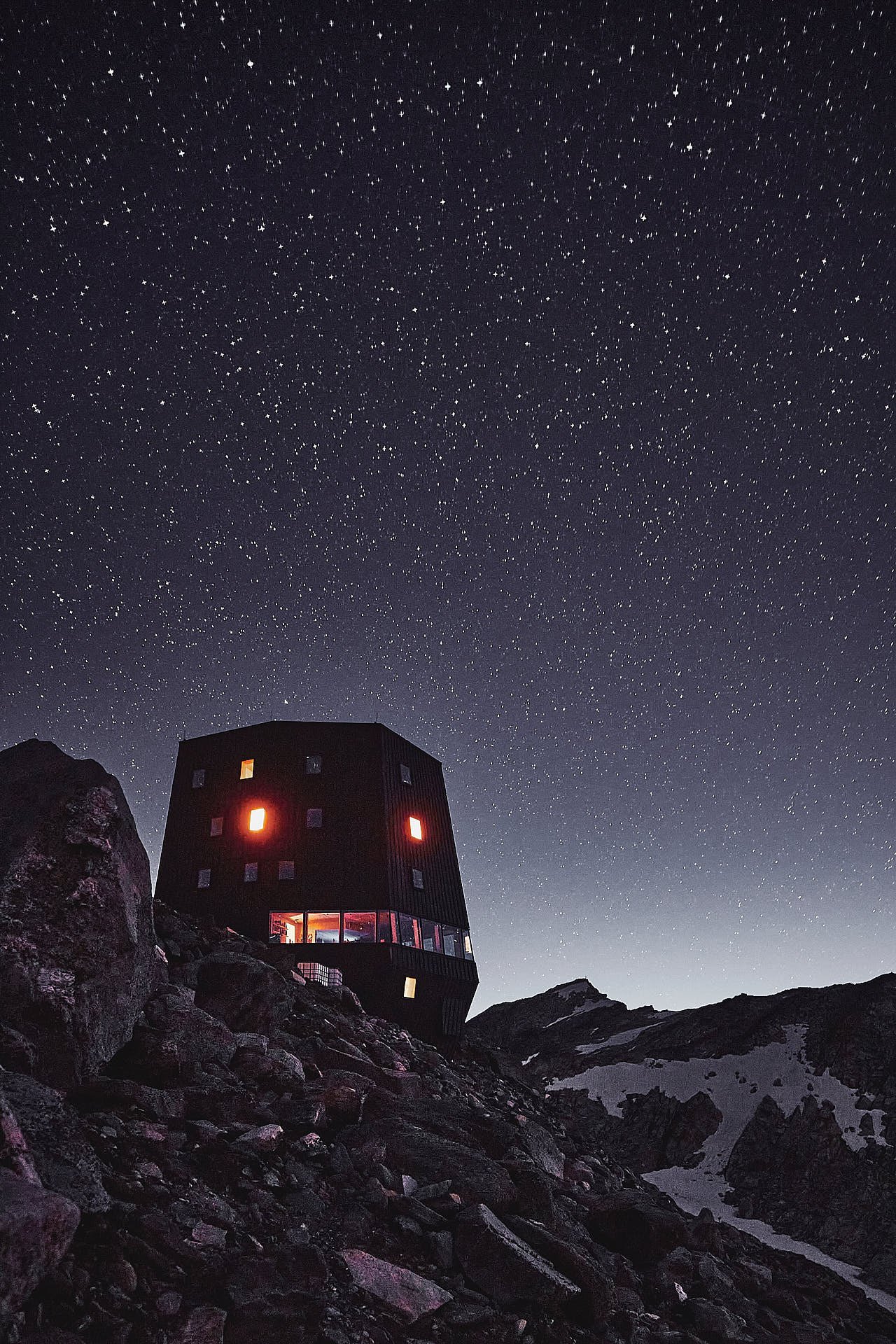

Interior photography of the mountain hut
Completely frozen from our shooting under the stars, we fled back to the hut. Between 06:00 and 06:30 we had half an hour to photograph the lounge before the breakfast guests arrived. I wanted to capture the warm and inviting feeling of the interior of the hut. The uniform building materials envelop the viewer with their warm colors. A beautiful color contrast is created in the pictures, emphasizing the warmth of the wood tones against the cool blue morning that we see through 'the ribbon window'. [looking over] This view of thirty 3000-meter mountain peaks is also Helmut Stifter's favorite feature of the building.

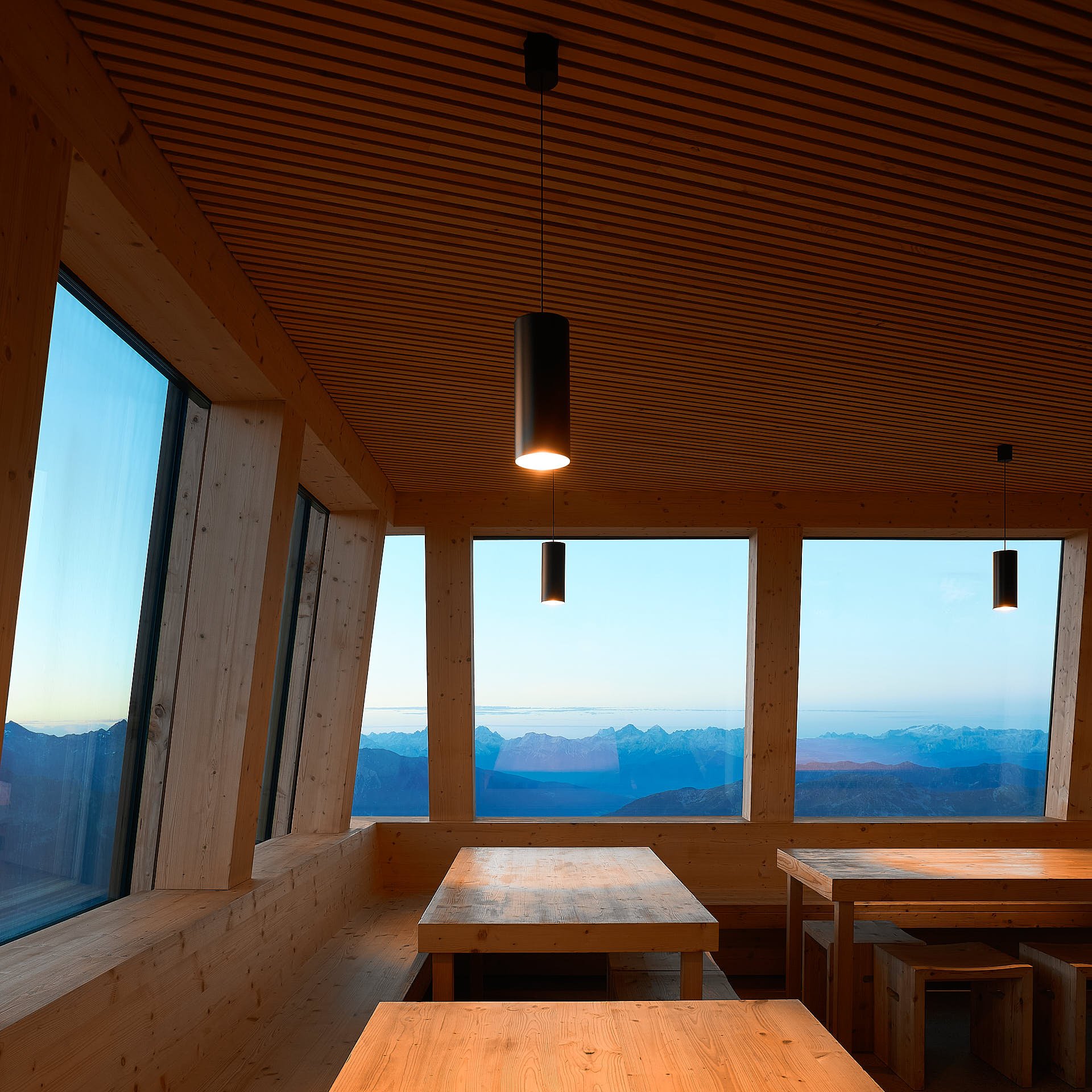
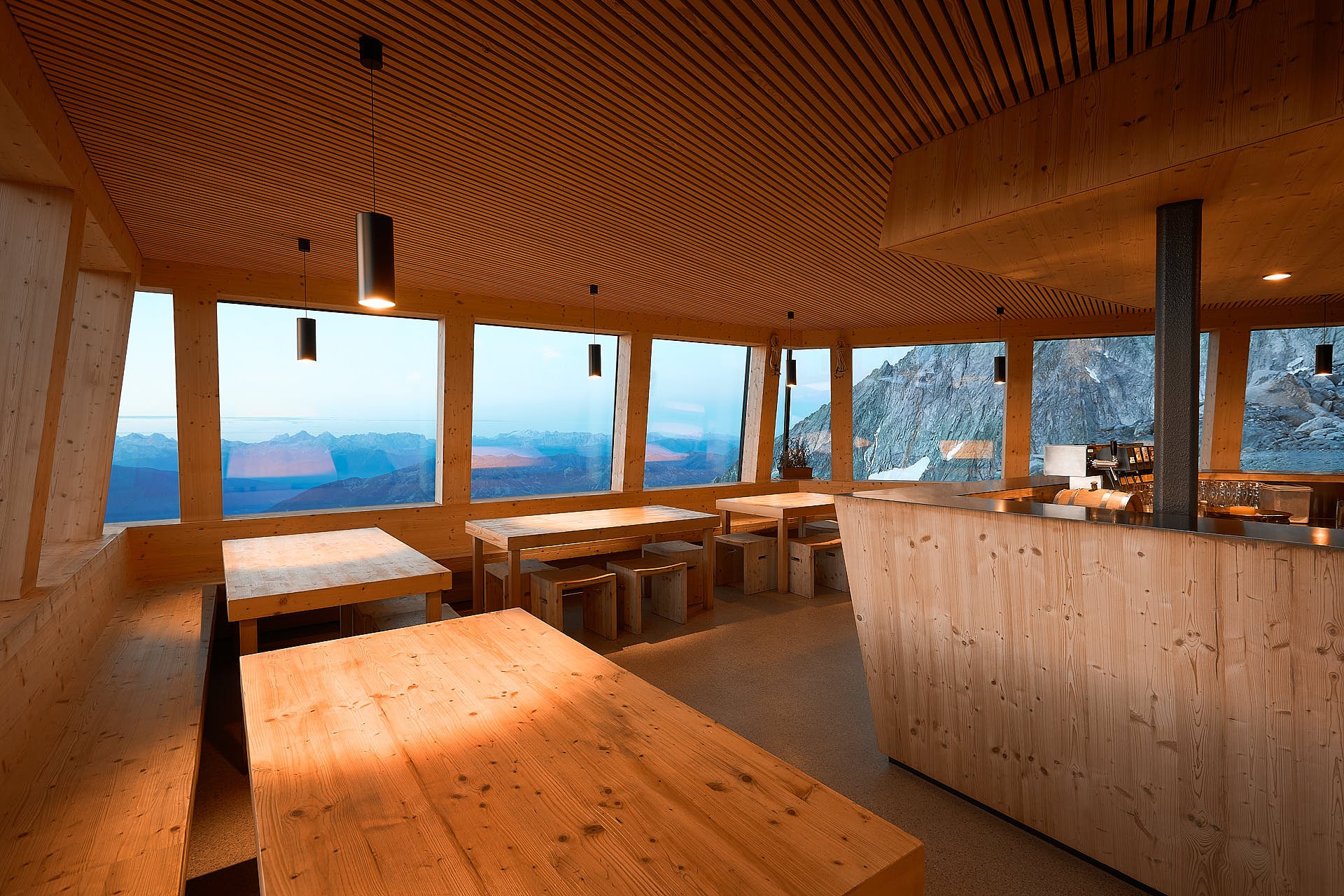
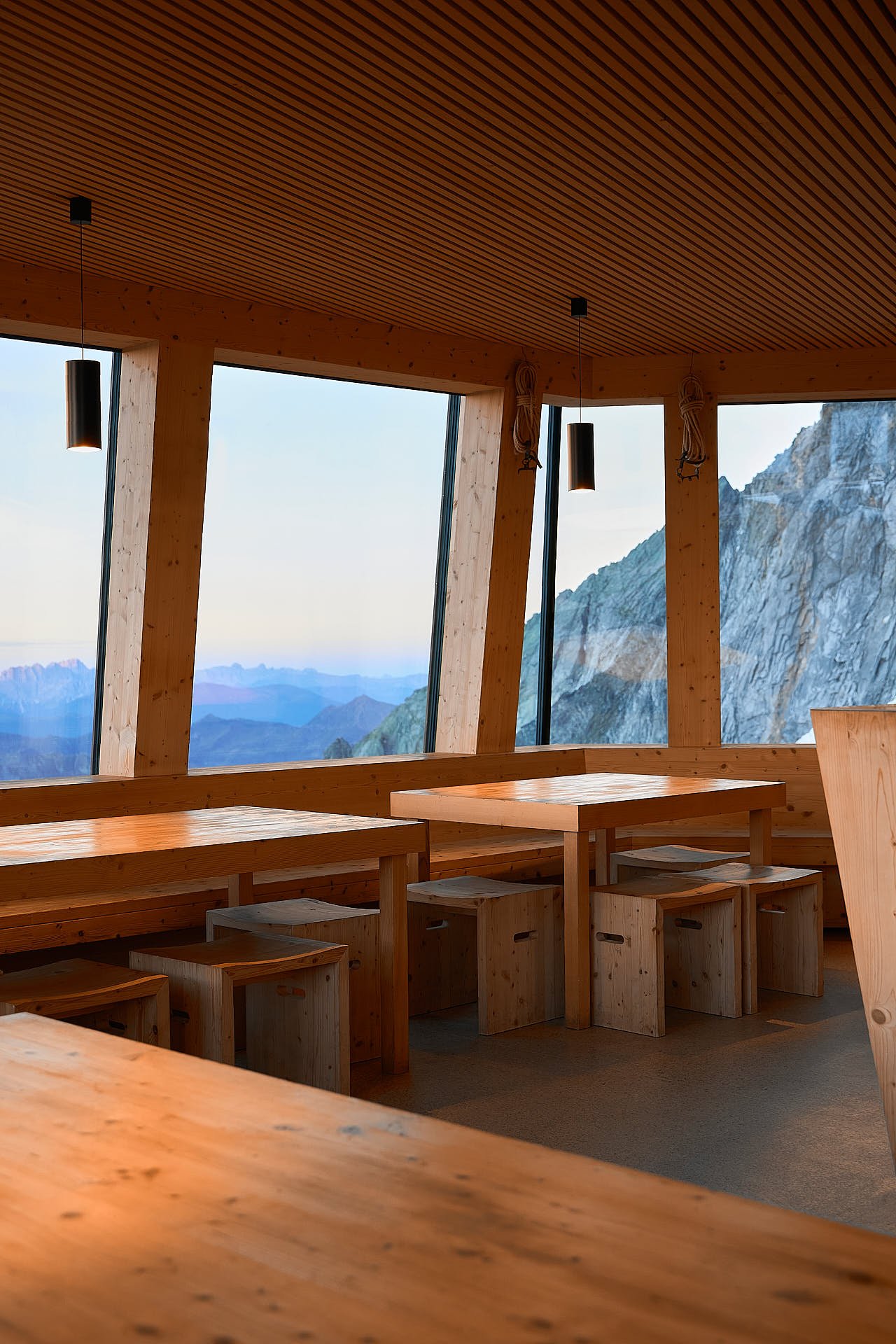

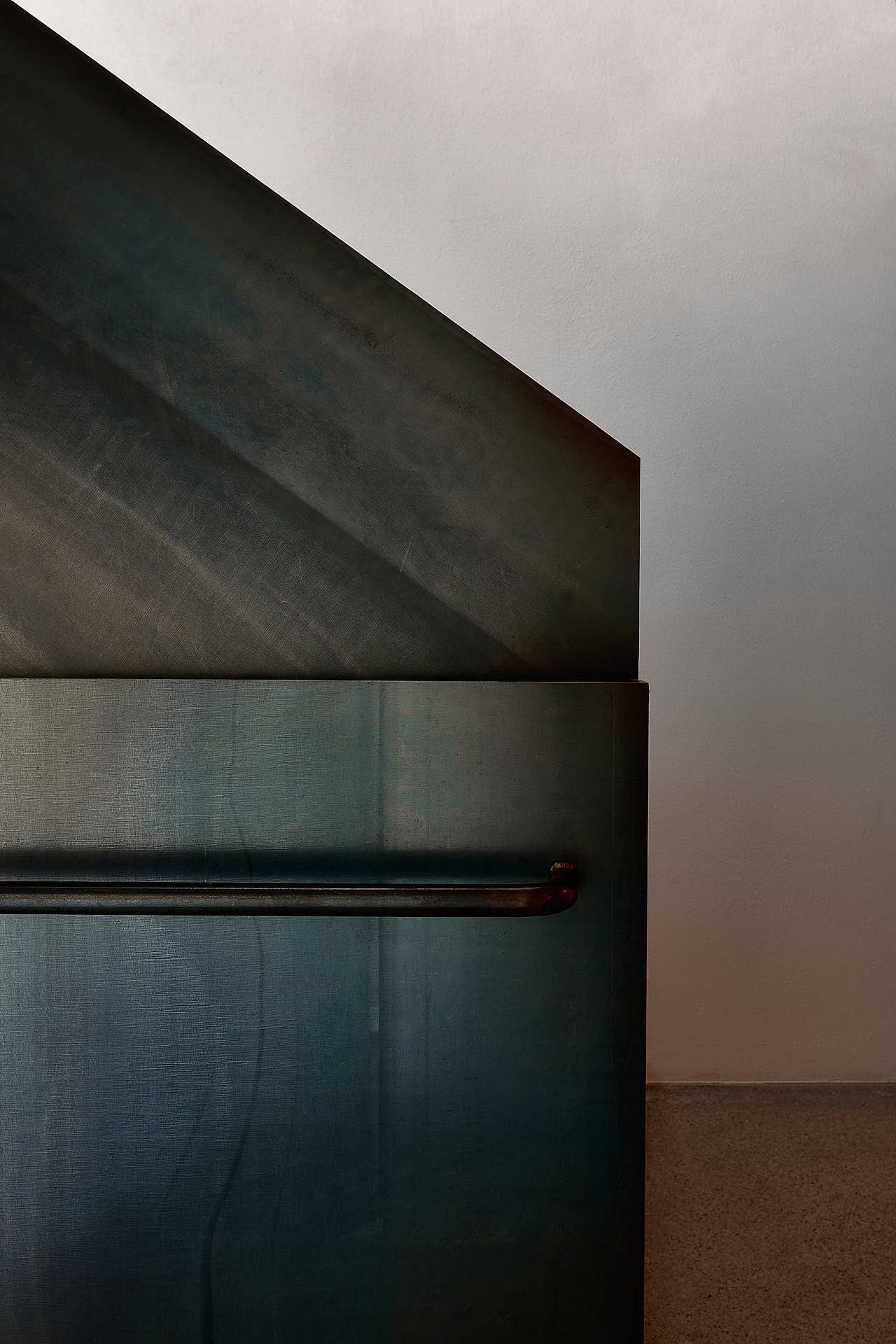
Sunrise at 3,000m above sea level
After we had finished our interior shots, we rushed out again to photograph the sunrise with the drone and show the New Schwarzenstein Hut from a new perspective.
Take a look at this stunning view. The pinks and blues of the sunrise over the Alps perfectly complement the color-graded image. By showcasing this panoramic strip of the mountains, we gain a strong sense of place and understand how incredible it is that the Neue Schwarzensteinhütte was built in this environment.

Form and Façade
As the sun rose higher and became slightly harsher, the sharp outline of the Neue Schwarzensteinhütte became clearer, along with the subtle coloring of its façade. Instead of appearing as a deep black, we can see how the oxidized copper perfectly matches the subtle colors of the rocks through reflective highlights. We are able to recognize the great foresight of Stifter + Bachmann's design and material selection. Note how the hut resembles the sculptural and monolithic form of the cairns and surrounding rock ledges. The bold shape of this structure feels harmonious in this landscape.



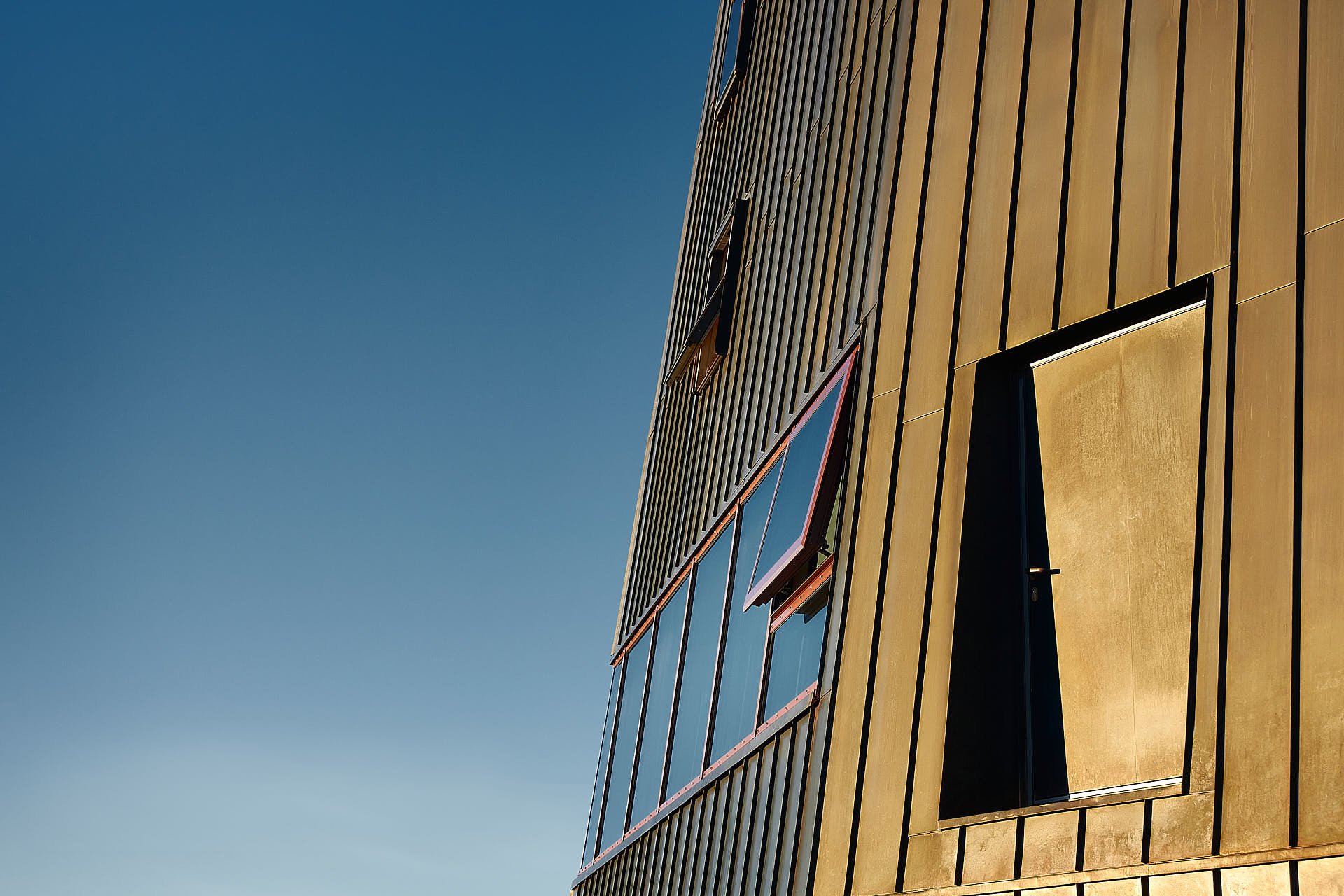
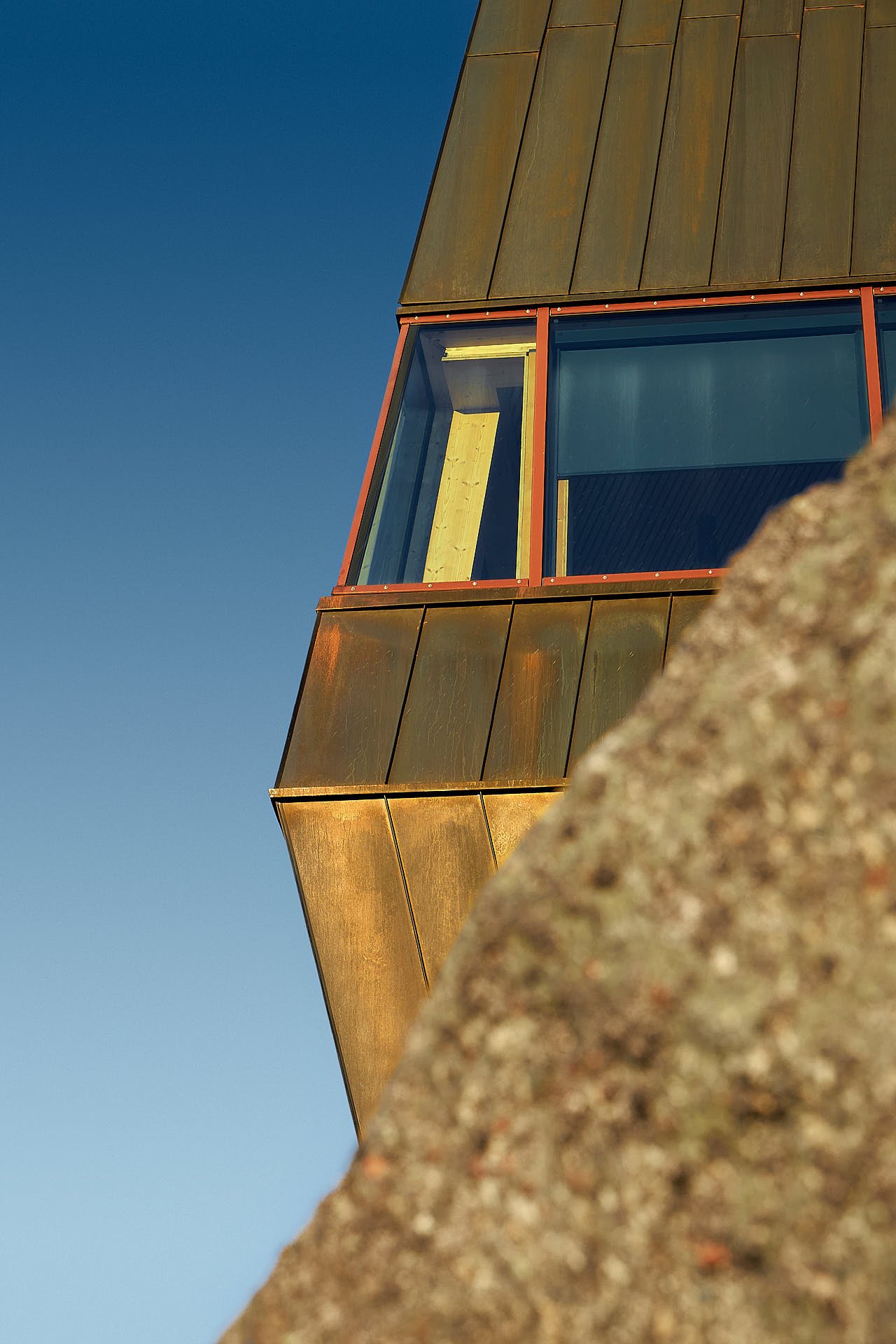

Highlighting the rugged mountain location
After a small breakfast, accompanied by a loyal hut dog, we ascended the Tribachkopf and viewed the Neue Schwarzensteinhütte, surrounded by glaciers and rock faces. Bathed in the morning light, this location is accentuated by the directional light and deep shadows, revealing the texture and harshness of the summit and snowmelt. On the left, the helicopter that delivers food and supplies to the hut every two weeks can be seen. We see a silhouette that helps us recognize the enormous size of the building. Contrasting this with the image on the right, we see how small the Neue Schwarzensteinhütte is compared to the surrounding mountains, just a small sculptural speck in the landscape. What a humbling feeling!


Image Editing
The post-processing for this shoot was quite straightforward. I focused on reconstructing the exceptionally vibrant colors we experienced during the sunrise. By removing some distractions (but retaining some people to show the scale of the hut), the mood and story of the Neue Schwarzensteinhütte are solidified through these color-graded and simplified images.
A perfect example of alpine architecture
Our new friend, the hut dog, accompanied us a little on the way back. It was time for us to wrap up our shoot and begin our descent as well.
The Neue Schwarzensteinhütte is one of my favorite examples of bold alpine architecture. Its innovative design defies the challenges that Mother Nature presented to Stifter + Bachmann. The hard-to-reach location, accessible only to mountaineers, has made me love this project even more. Photographing this mountain hut was a true alpine photoshoot and a project I won't soon forget!

Equipment
1st Camera
2nd Camera
1. Lens
2. Lens
3. Lens
Tripod
Software
Canon EOS R.
Canon EOS 5D Mk III
Canon TS-E 24 mm 1:3.5 l II
Canon EF 50 mm 1:1.2 l USM
Canon RF 24-105MM F4L IST USM
Feisol CT-3441T Rapid
Capture One 21, Adobe Photoshop CC




